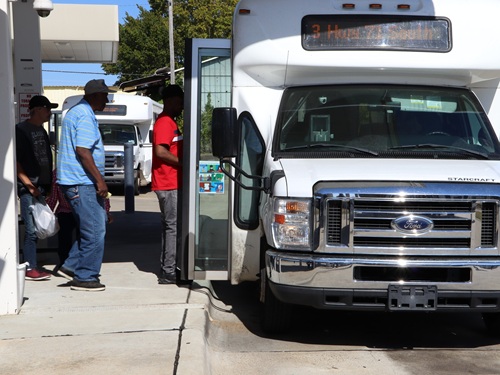A recent data analysis conducted by the Pennsylvania Department of Transportation indicates that fatalities, injuries, and crashes all decreased at 22 roundabouts at 19 locations across the state over the last 19 years.
[Above photo by PennDOT.]
“We continue to be encouraged by the safety advantages of the modern roundabout,” noted Yassmin Gramian, PennDOT secretary, in a statement. “Lives are being saved and injuries reduced. The data cannot be denied.”

PennDOT said those 22 roundabouts on state routes replaced stop sign or traffic signal-controlled intersections. Based on an analysis of police-submitted crash reports from 2000 through 2019, the agency said fatalities at those 22 locations declined by 100 percent and the total number of crashes decreased by 21 percent.
Additionally, suspected serious injuries fell by 77 percent, suspected minor injuries dropped by 57 percent, and possible/unknown severity injuries declined by 82 percent. However, PennDOT did find that property damage-only crashes increased by 21 percent at those 22 roundabout locations.
The agency added that it usually installs roundabouts to address intersections with safety issues but also to improve traffic flow as well as other reasons such as traffic calming or to facilitate safer pedestrian mobility. In addition to the roundabouts noted above, PennDOT said it has built 34 more during the last two decades with 40 more in the design phase.
However, the agency pointed out that roundabouts may not always be the best option for intersection control due to topography or other reasons, such as property impacts, capacity issues, and proximity to other intersections.
In a separate release, PennDOT noted that it is now accepting project applications for Multimodal Transportation Fund grants through November 6.
“The Multimodal Transportation Fund enhances connectivity in our state and allows local projects to benefit all regions,” noted Gramian.

“Projects are selected based on safety benefits, regional economic conditions, technical and financial feasibility, job creation, energy efficiency, and operational sustainability,” she said.
The agency said eligible applicants include municipalities, council of governments, business/non-profit organizations, economic development organizations, public transportation agencies, public airports, airport authorities, and ports and rail entities.
Projects applying for MTF grants should coordinate local land use with transportation assets to enhance existing communities; improve streetscape, lighting, sidewalk facilities, and pedestrian safety; improve connectivity or utilization of existing transportation assets; or advance transit-oriented-development.
PennDOT noted that in fiscal years 2020 and 2021, 27 projects in 23 Pennsylvania counties awarded more than $30 million in MTF grants. The agency added that it expects to announce grant recipients next year, with funding becoming available in July 2021.
 States
States
Nick Donohue Appointed Virginia’s Secretary of Transportation
December 12, 2025 States
States

